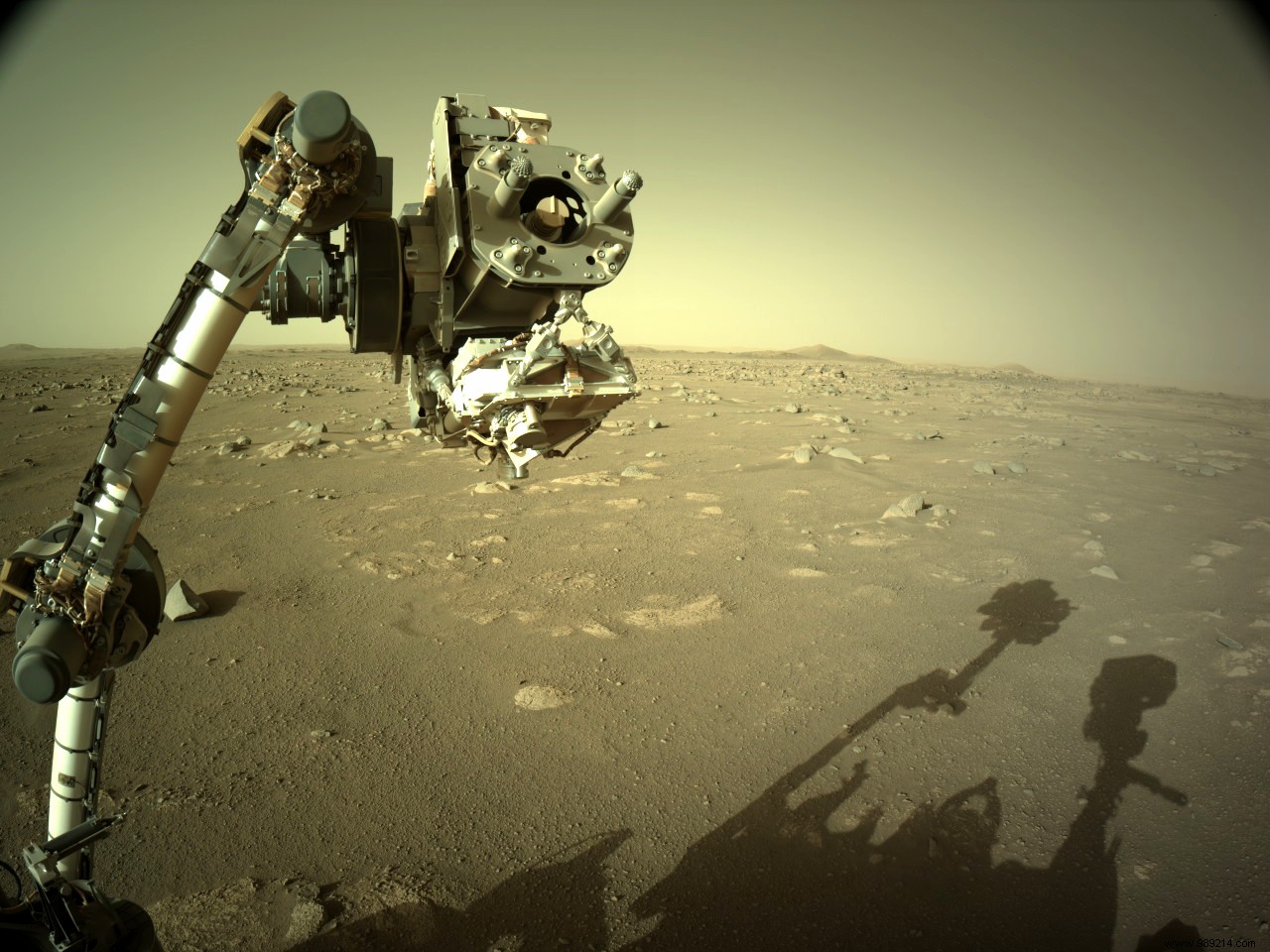The US space agency recently sent the Perseverance rover to the Red Planet to collect soil samples. However, it is not able to determine whether life will be present there or not. The samples will have to be sent back to Earth for analysis.
The Perseverance rover arrived on Mars on February 18, 2021 without incident. He also fired his first laser beams a few days ago. Its main objective is to collect samples of soil and other rocks in order to store them before transporting them to our planet. It will also characterize the geology of the planet Mars. But what is Perseverance really looking for in terms of extraterrestrial life? The Jezero crater (quadrangle of Syrtis Major) is a priority target, because it was once filled with water with the presence of a large lake as well as a river delta.
According to scientists, it is possible that organic molecules are there, containing a form of microbial life . This potential life would have developed four billion years ago, when Mars really resembled Earth. However, it certainly did not go beyond the single-celled stage.

Only, here it is, Perseverance does not seek knowingly. If there is a find, it will be determined after the samples return to Earth . Indeed, the rover is not equipped with the necessary technology to discover traces of life itself. Perseverance is therefore not an exobiology rover per se.
Equip a rover with instruments capable of performing chemical analysis is not impossible, quite the contrary. The European Space Agency (ESA) ExoMars rover planned for 2022 will have this kind of equipment, namely the Mars Organic Molecule Analyzer (MOMA). However, Perseverance does not carry this type of equipment and it is no coincidence:NASA has planned a return mission. It was therefore not necessary to carry out extensive tests directly on site . Moreover, the original idea of NASA was only to make this machine a geological and mineralogical exploration rover.
Upon their return to Earth, the samples will be handled with immense care and will be stored in a P4 (maximum security) laboratory. If the samples contain life, it will be discovered then and not before. In the event that researchers find bacteria there, it will be a strong confirmation that there is life on the Red Planet.